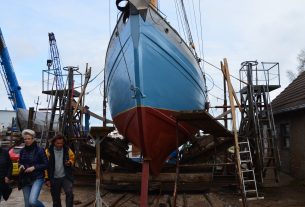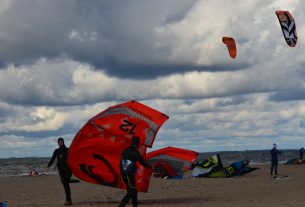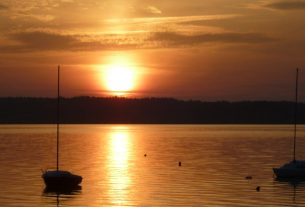LOCATION
The Curonians, a Baltic tribe used to live between the Baltic Sea and the Samogitian Upland. It was in the Middle Ages that their land was divided between the Grand Duchy of Lithuania and the Livonian Brothers of the Sword replaced by the Protestant Duchy of Courland after the Reformation. Only their southern part belongs to Lithuania at present. For centuries the land had been inhabited by Lithuanians, Latvians, Germans, Poles and Jews, differing in customs, languages and traditions. The traces of the diversity have been visible until present, similarly to the turbulent history of medieval Christianisation. Palanga (Lit. Palanga, Germ. Polangen) and Kretinga (Lit. Kritnge, Germ. Crottingen) are among the biggest towns here. However, due to the developed tourism and the presence of an airport (Palangos oro uostas), we recommend Palanga resort, located at 55° 55′ N, 21° 4′ E, as the starting point for sightseeing.


photo source: own photos.
SIGHTSEEING
The most distant places – Palanga and Šilalė are situated within mere 50 km from each other, but they are connected by a convenient asphalt road. Palanga, Kretinga and Šventoji are located within close distance, and you may easily move from one to another by bike as well. Parking in Palanga is payable in summer season. Catholic churches are open during the day (usually from 9 am to 5 pm), but Protestant ones – only during religious services. You have to take a longer walk in the case of the park and Mount Birutė (Birutės Kalnas) in Palanga, as well as the sacred stone of Šilalė near Mosėdis. When in Mosėdis, it is worth having a longer walk around a unique Museum of Boulder. In the vicinity there are also clearly marked hill forts (pilia kalnis) and former sacred mounts (alka kalnis).
ATTRACTIONS
In Palangathere is a Samogitian hill fort and a place of worship (by the Tyszkiewicz Palace) as well as Mount Birutė(Birutės Kalnas), where a pagan priestess, married to Prince Kiejstut used to live. The town may be watched from the tower of the Catholic church. Kretinga with the impressive Church of the Annunciation of Virgin Mary and the former Benedictine (present day Franciscan) Monastery is located to the east of Palanga. An astronomical clock has been present in the park at the Tyszkiewicz Palace (orangery) since 2002. The Samogitian Sanctuary (Žemaičių Alkas) with totems embodying pagan deities who also assume the role of an astronomical calendar indicating Pagan holidays, was established at the former pagan cemetery in Šventojiin 1998. Last but not least, we recommend Mosėdisin the vicinity of which there is a pagan worship Šilalė Stone. In Mosėdis there is beautiful St Michael’s Church from 1783 as well as the unique Museum of Boulder (Akmenų muziejus) which presents around 5,000 boulders and 150,000 smaller stones collected in the neighbourhood.
INFORMATION SOURCES
Heritage Class: [ C ]Cultural Heritage
Subclass [SR] :BLUE and GREEN believes and religions
WEB PAGES
https://www.palangatic.lt
https://www.kretinga.lt/
https://zemaitiualka.lt/
http://www.turistopasaulis.lt/
https://www.akmenumuziejus.lt/






